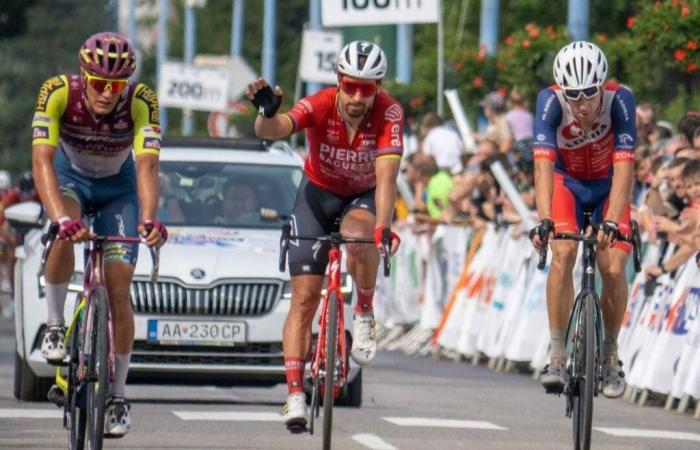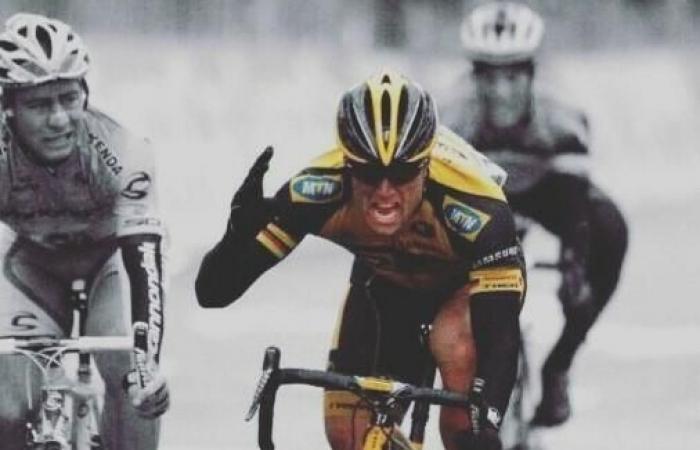We would like to live in a world of fairy tales with happy endings, of good and beautiful champions who run for pure passion, those who climb to Olympus and come down when they’ve had their fill, just because we have to make room for others too. The brave warrior who, having grown old, hangs up his carbon, satiated with successestransforms the frame into a scythe and devotes himself to rustic pastimes, encouraging future generations with wise paternalism. It happens that we imagine two-wheel champions as men so satisfied with having realized their dreams that then everything else can only come easy to them.
Peter Sagan It was a phenomenon that everyone, sooner or later, loved: even in the era of hatersit is impossible that even the greatest of his detractors did not fail to applaud him in a career so studded with victories.
The Inevitability of Beautiful Hopes
But Peter has always been too small for the role of the predestined one who becomes an idol. His career has never moved according to the expectations of anyone other than himself.and one wonders if at a certain point it wasn’t the expectations that he himself had on himself that failed. Since he had turned pro, in 2010, with the then Liquigas Doimo, he had been given his debut at the Tour Down Under, coming out with a few placings, and then earning his first headlines in the newspapers with those two victories conquered with disarming ease at the subsequent Paris-Nice: he had shown that he had the qualities of a sprinter, the burst of a classicist, the watts of a time trialist. We were then leaving the era of the Bettini and of the Rebellinand to make a clean sweep of the classics were left Beans, Cancellara e Gilbertin addition to a Freire that he would have taken one last Sanremo that year (Sagan did not participate that year, and surely someone will have thought, maybe even written, that the boy must grow up, there is no point in rushing things, he will have time to win three or four).
He promised, someone who already had those numbers at twenty, to be potentially anything, the classic “next big thing”, although the year in which the boy showed he could beat the strongest was 2012: already fourth place at Sanremo, beating the group chasing the trio Gerrans–Cancellara–Nibali (or rather, Cancellara and the two passengers on the train, it must be said) had consecrated him as one of the fastest wheels in the group (the first significant victories at the Vuelta had already arrived the year before). The three stages won at the Tour and the first green jersey secured with sensational scores he had convinced most people that, once he had put his mind to it, Peter could win on any terrain, so much so that some victories in short stage races (the Tour of Poland in 2011) even made one think that sooner or later he could aspire to a ranking in some GT: comparisons with the generation of phenomena that would succeed him are easy, From the Poel e From Aert above all, but here other discussions would start, for now suffice it to say that Sagan was certainly the forerunner of this type of cyclist. In fact, even in the Northern classics he had achieved his first placings (second at Ghent, fifth at Flanders, third at Amstel, second at the Strade Bianche in Moser) that made Sagan look like a potential crack in any classic, but those results, as time went by, would sound more and more like slaps rather than promises.
The heaviest of these arrived in that Sanremo disaster of 2013: not even the snow of the Turchino and the cold seemed to have put Peter in difficulty, who, having arrived on the Italo Calvino seafront, had to get the better of a group of six other opponents. A penalty for him, missed not due to the fault of Cancellara, Kristoff or Cavendish, but of Gerald Cioleka Teutonic prospect who, unlike him, had never corresponded to what he had shown in the youth categories: rather than choosing who was the Baron in the Trees and who was the Non-existent Knight, on the Calvino seafront the Castle of Crossed Destinies.
New Cycling Star?
The following years were a repetition of a pattern that made his supporters grumble: attempts that regularly failed in the classics, including the World Championships, where a victory almost never came (he consoled himself with a Ghent-Wevelgem and a Brabant Arrow, when he beat a Philippe Gilbert in the rainbow jersey), the Roubaix he skipped for two years (it seems that for Amadio it wasn’t right for him), the inevitable Tour of California and the Tour de France where he dominated the points classifications, which seemed to be the real essential objective of the season: the Cicloweb forum thread about him had been titled for many years now: Peter Sagan, new cycling star?
He arrived to remove that question mark The Richmond World Cupwon with a high-class number with which he had detached himself from the wheels of the best sprinters that the cycling scene had to offer (Gilbert, Van Avermaet, Valverde, Matthews…): that was the first of three consecutive titles he won, a streak that ended on the rough edges of the 2018 Innsbruck World Championship, the one in which Valverde finally found the rainbow jersey by succeeding him.
With that success came the first expressions of esteem from the general press: from the caricature that stretched out his hands on the bottom of a beauty queen on the podium in Flanders, now Sagan was making the news for his first words after the world championship victory: «Win the World Cup here – these – It’s something that gives me a lot of motivation and gives me the opportunity to talk about the difficult situation we are experiencing in Europe. As a people of the world we must changeI hope that through sport we can be an example to make the world a better place». Slovak President Andrej Kiska idolized him: «A warrior. That’s the right word. Despite the bad luck, he gets up every day and goes great. That’s the secret of his success, he never gives up and always gives everything he has. You are making our nation proud of you, Peter». The icing on the cake was that Sagan had gotten married, and his media image as a cheeky and fun athlete, reinvigorated by his own videos on his YouTube channel, had been joined by that of his husband first and then of his father.
Having moved to Tinkoff in 2015, he was now the most successful and paid athlete in the movement. In 2016, the Tour of Flandersand in 2018, in the Bora jersey, the Paris-Roubaix. Then something went wrong: the following year he would win the last points jersey of the Tour and the year after that, 2020, he had brought with him only one victory at the Giro, after a Tour from which he had left empty-handed for the first time in seven years. The marriage had ended very badly and with legal consequences, and since then the Sagan who was soaring and holding court in the sprinters’ group has not been seen again, leaving room for a rider who he increasingly gave the impression that he was simply fulfilling his obligationsalmost happy that the new phenomena that were exploding around him took the pressure off him.
Sunset and retreat
The last three years have given him only two Slovak championships (he has won eight in his career, to which we could add the four “granted” to his brother Juraj), a cyclamen jersey at the Giro d’Italia 2021a stage at the 2022 Tour de Suisse, (a total of only two successes in the TotalEnergies jersey), until his penultimate year as a rider, the 2023, the first in which victory never actually arrived. In the buen retreat he chose for his last season, dedicated to mountain biking, he just allowed himself two stage races on the road wearing the Pierre Baguette jersey, one in Hungary and one in his native Slovakia: no fireworks and final catwalks, but a farewell so subdued compared to the greats of the 2010s that it almost sounded sad.
From Peter Sagan, in the long career he had on the road, we would have I wanted to see many more wonders than those he gave us: among so many satisfied expectations we would always find just as many unfulfilled ones, but then again what’s the point of being number one in the world if you can’t take the liberty, for example, of racing an MTB race at the Rio Olympics without any certainty of result, when in the road race you would have won? Greg Van Avermaetthe runner who at that time was competing with him for the most races due to similar characteristics. If a lot of character is needed to fulfill expectations, perhaps just as much is needed to disappoint them and not transform them into demands.




